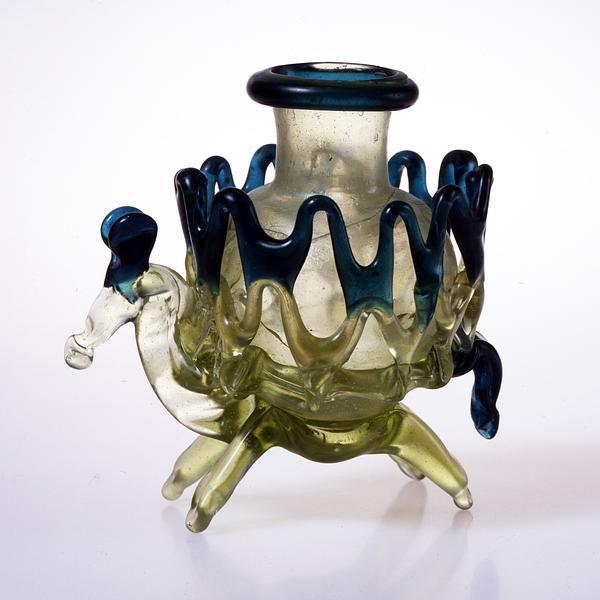Flacon, yellowish and blue-green glass
Syria?; 7th-9th century
H: 10 cm
This blown flacon was mounted so that it became part of a horse-like animal made of pinched glass. The flacon belongs to a type that is known from Syria during the Roman Era. After an interval, flacons of this kind in the shape of animal figures were made again in the early Islamic period. Unlike the Roman pieces, they were now set into a richer, lace-like decoration of pinched glass, perhaps inspired by the type of masterfully undercut Roman class called vasa diatreta.
The flacon’s wide neck indicates that it was intended to hold a liquid that was to be poured – probably a fragrant oil or balsam.
Inv. no. 49/1979
Published in:
Kjeld von Folsach: Islamic art. The David Collection, Copenhagen 1990, cat.no. 224;
Stefano Carboni and David Whitehouse: Glass of the Sultans, Corning Museum of Glass, New York 2001, cat.no. 29;
Kjeld von Folsach: Art from the World of Islam in The David Collection, Copenhagen 2001, cat.no. 316;
Sabiha Al Khemir: Beauty and belief: crossing bridges with the arts of Islamic culture, Brigham Young University Museum of Art, Provo 2012, pp. 112-113;
